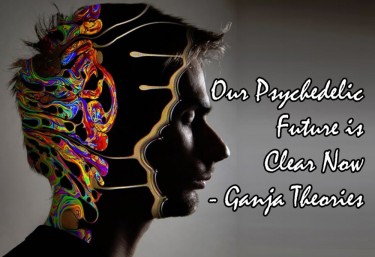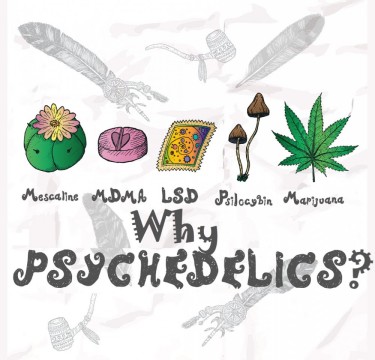
The use of psychedelics to treat mental health problems
Psychedelic drugs are one of mankind’s oldest methods of treating a variety of disorders, particularly those of the emotional and mental types.
Although psychedelics reach another heyday with the advent of treatments derived from magic mushrooms, LSD, and other popular drugs, they were not always popular and were in fact feared for side effects falsely marketed by prohibitionists. But the truth is that most psychedelics, especially those that grow naturally, including mushrooms, cacti, seeds, leaves, and trees, have powerful healing properties that can solve some of our most difficult and painful mental health problems. In ancient cultures they were used for mystical and spiritual experiences that also promoted healing. There are also many synthetic and chemical psychedelics, although in this article we will discuss those that are derived from natural sources or grown in the wild.
Today, psychedelics have given much hope for the treatment of even some of the most difficult mental illnesses; Some of these include depression, post-traumatic stress disorder (PTSD), anxiety, stress, addiction, and more. They have helped thousands of people around the world and are becoming more accessible thanks to decriminalization in some areas.
Here is a brief guide to natural psychedelics and the mental illnesses they can treat.
psilocybin
Psilocybin, better known as magic mushrooms, is a hallucinogen that produces changes in thoughts, mood, and cognition when consumed. Psilocybin is the name of the key compound in mushrooms that converts to psilocin in the human body.
There are many different mushroom and mushroom species that contain psilocybin and they can be found all over the world. There are over 50 species, and most of them are from the Psilocybe, Copelandia, and Panaeolus genus. These can be consumed in many ways, although the most popular way to consume them is in raw form or dried, drunk in a tea, or boiled, although some people are already processing them into dried material that is placed in capsules for more accurate dosing.
Psilocybin is the most popular psychedelic drug used to treat addiction, depression, trauma, stress and anxiety. Some patients also take it to manage terminal cancer anxiety and terminal illnesses, as well as cluster headaches.
It also has the record of being the best tolerated drug in terms of safety. They generally work by activating the serotonin receptors in the brain, particularly those in the prefrontal cortex; This part of the brain is responsible for regulating perception, cognition, and mood. It induces a range of effects including peacefulness, derealization, depersonalization, and euphoria, although some psychedelic experts advocate regular consumption of psilocybin in specific, controlled doses for a specific benefit, such as: B. the treatment of anxiety disorders.
LSD (lysergic acid diethylamide)
LSD, also known as acid, is a powerful chemical made from lysergic acid.
Lysergic acid grows in ergot fungi, although it was synthesized in a laboratory as early as 1938 by Albert Hofmann, a Swiss chemist. It’s a famous hallucinogenic drug that many “tripped” to recreationally, particularly in the 1960s and 70s, although more light is being shed on its healing properties. It is usually consumed as a clear liquid, white powder, dabbed paper placed sublingually, or capsules.
However, there is growing interest in LSD’s potential to treat stress-related anxiety.
LSD use has been shown to produce positive outcomes in humans as it promotes feelings of empathy, trust, happiness, and altruism. It can also be used to treat depression.
LSD works in the human brain by binding to serotonin, and there are also studies to suggest that it can promote the growth of new brain cells and help it form new connections, particularly in parts of the brain that normally undergo cell death view as a consequence of mental disorders. Taking LSD in controlled small doses, known as microdosing, has become a popular practice, although LSD is still illegal. While there are some studies on the potentially beneficial effects of LSD and others are already self-medicating with it on a regular basis, there is still more to understand about its use in a clinical setting, although what we are seeing is promising.
peyote
Peyote comes from a cactus plant. Its hallucinogenic compound, mescaline, can be consumed directly, but can also be made in a laboratory. The cactus grows wild in Mexico and the American Southwest.
Peyote is still illegal, but it was used by the indigenous Huichol people and shamans to enhance spiritual experiences. It is consumed by harvesting the top of the cactus, known as the crown, which resembles small disc-like knobs. These can be soaked in water with a tea, chewed or eaten directly fresh or dried.
There are studies showing that consuming peyote has benefits for people suffering from depression. Because it activates the serotonin receptors, it can make you happier. Another study shows that lifetime use of mescaline was linked to a reduction in agoraphobia, a type of anxiety disorder that causes subjects to view their surroundings as threatening. Additionally, researchers found that peyote may be beneficial in reducing suicide rates.
Ayahuasca
Ayahuasca is a hallucinogenic drink that combines two plants: the ayahuasca vine and a chacruna bush that contains DMT (dimethyltryptamine), a hallucinogenic drug. It is still illegal, although traditionally used by shamans in Peru, Ecuador, and Bolivia, as well as other South American nations. In these regions, indigenous peoples have used the drink to communicate with their ancestors, access knowledge, and heal themselves from others.
Many consider ayahuasca to be the mother of all psychedelics. Thousands travel around the world to South America every year to take ayahuasca under the guidance of a shaman, but there are also a few centers in the United States that allow you to take it in a controlled environment.
Its benefits are far-reaching, and many who come out of ayahuasca retreats say it feels like 10 years of therapy in one weekend. It can treat addiction, deep depression, PTSD, suicidal thoughts, and more.
Conclusion
Given the many benefits of these natural psychedelics, it’s easy to see why people avoid prescription drugs and choose them instead. If you wish to experiment with this, remember that it is always best done under the supervision of an expert or doctor.
MORE ABOUT PSYCHEDELICS, READ THIS…

OUR PSYCHEDLICAL FUTURE IS CLEAR NOW, GANJA THEORIES!
OR..

I’m fine with weed, why would I TRY PSYCHEDELICS?

Post a comment: